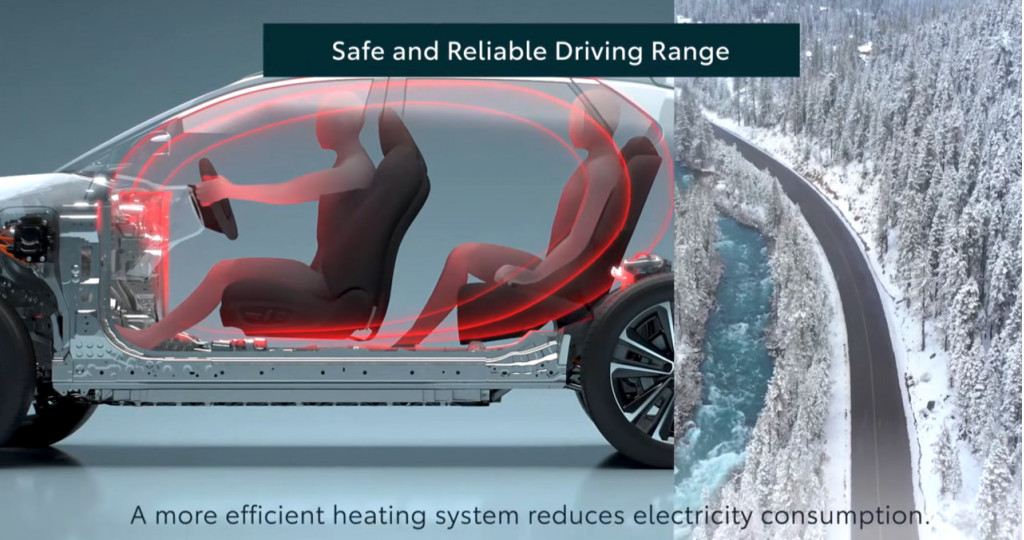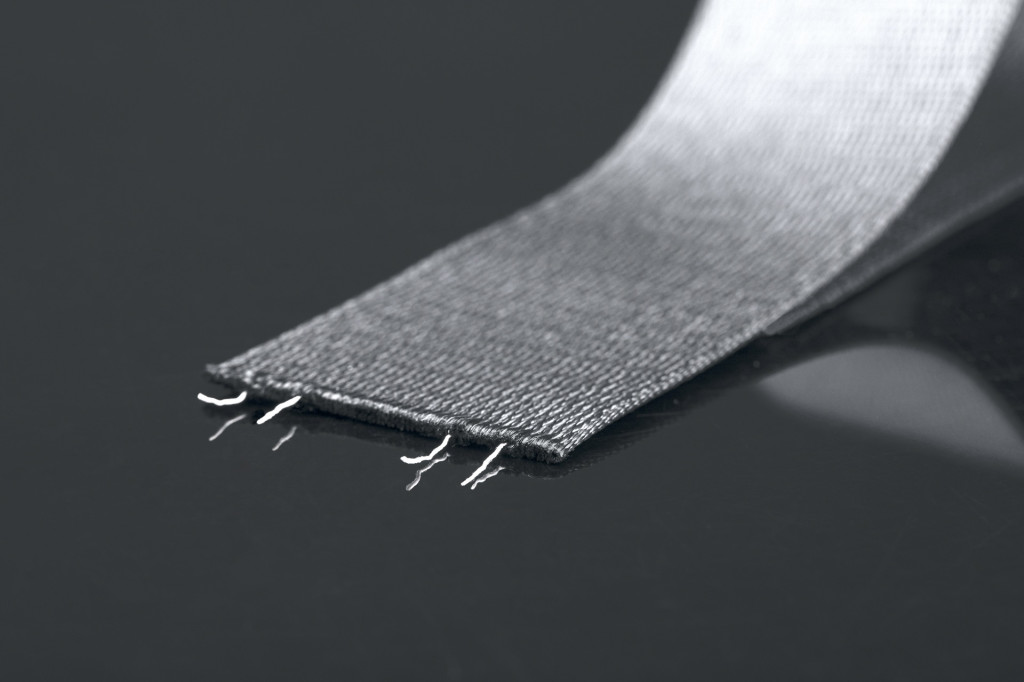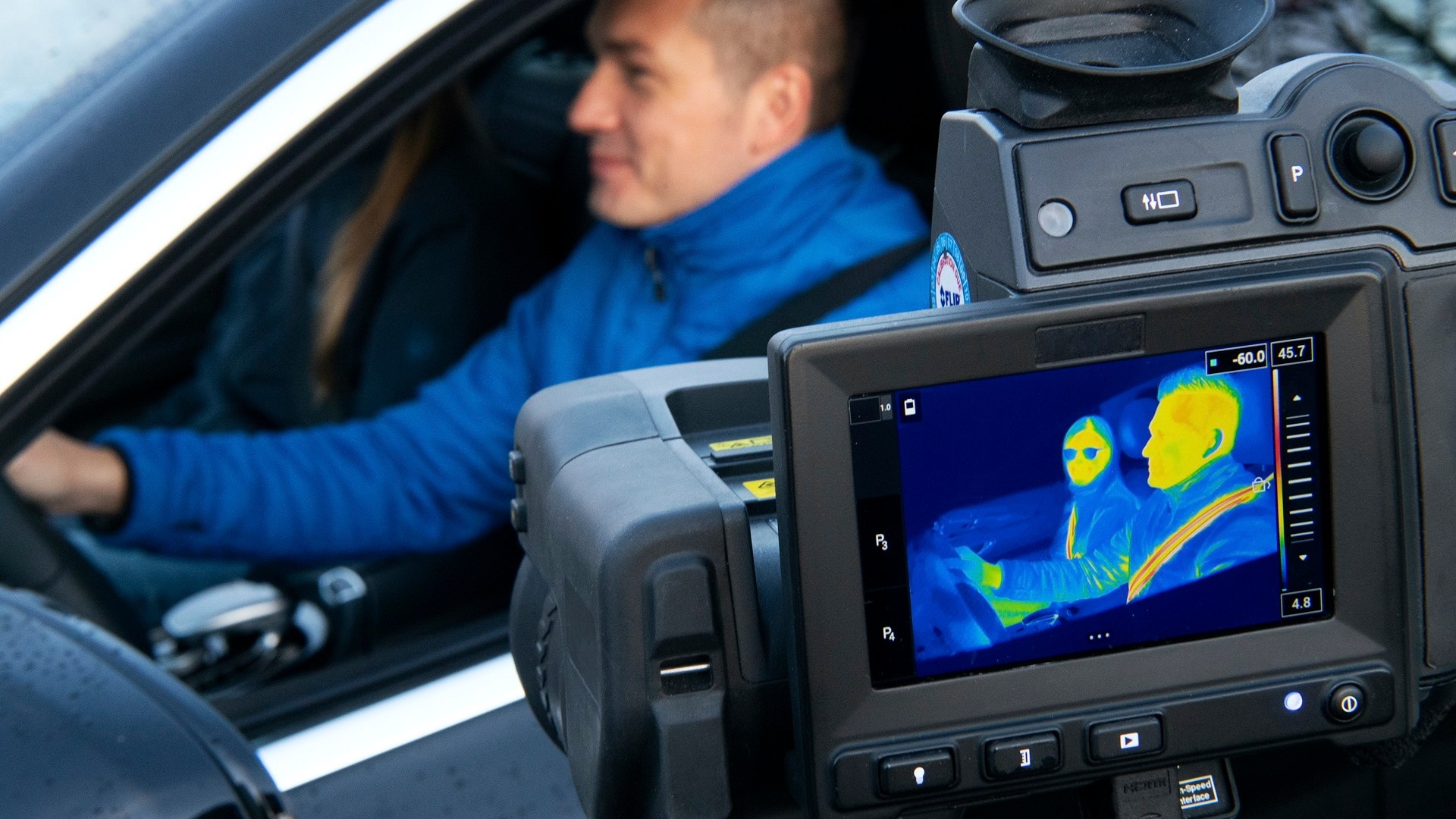You might already have heated seats and possibly a heated steering wheel in your vehicle. Are you ready for a heated seat belt?
That’s what ZF, one of the world’s top automotive suppliers, announced this past week at CES. The innovation is focused toward electric vehicles.
While it might sound extravagant and unnecessary, ZF has a point with its so-called Heat Belt. Each heated accessory in an EV isn’t solely for convenience and luxury. It helps to steer the burden away from conventional cabin heating.
In cold weather, cabin heat is the second major energy consumer, ranking only after the motor systems that propel the EV along the road.

ZF Heat Belt - heated seat belt for EVs
Electric vehicles don’t have the excess of waste heat that internal combustion engines do, so it’s not unusual for EVs to lose 20% of their efficiency and driving range. According to ZF, the heated belt may enable a range gain of up to 15%—by reducing the use of conventional climate systems and shifting to direct-contact heating, versus heating the air. The system consumes about 70 watts, and it raises the temperature of the seatbelt material to 104 degrees Fahrenheit (40 degrees Celsius).
It’s also not that expensive. According to ZF, the cost of adding heating to the seat belt is similar to the current, increasingly popular, component set added to steering wheels.
For now, it’s a pragmatic approach amid a number of creative approaches companies have shown in recent years. BMW in 2012 investigated infrared-based cabin heating for its then-upcoming i3 EV, but it didn’t show up in the production version. That’s a particularly intriguing solution as it could heat surfaces of the vehicle (or occupants) selectively—not the air in between.
Radiant cabin heating is another solution that automakers and suppliers have attempted to tackle in recent years. In 2015, researchers from Germany’s Fraunhofer-Gesellschaft demonstrated a lightweight “film-based panel” for radiant heat, just a few micrometers thick, that could be used for warming cabin surfaces.

Toyota bZ4X radiant heat
A form of radiant heat is an option on the BMW i7, in the form of panel heating for armrests at the door and center console. A more extensive radiant heating solution is employed in the Toyota bZ4X; it has the first U.S.-market radiant floor heat.
In the meantime, heat pumps are part of the solution to make climate control systems more efficient and help remedy the cold-weather range-loss dilemma for EVs.

ZF Heat Belt - heated seat belt for EVs
ZF's Heat Belt is a market first—at least in such a way that can be scaled up for mass-market vehicles. So what took the industry so long to come up with this? One of the answers is that the seat belt is a core safety item, so it needs to comply with durability testing that wouldn’t apply to other heated items. It took a “special textile processing method” to weave the heating conductors into the belt structure without interfering with belt operation; otherwise protection is the same.
The supplier confirmed that the belt is already a fully developed product, but that it’s still seeking a first customer. Judging by all the attention on electric vehicle range—and the bad optics of early adopters getting stranded in winter—it’s reasonable to assume that we’ll be seeing much more of this feature soon.
















